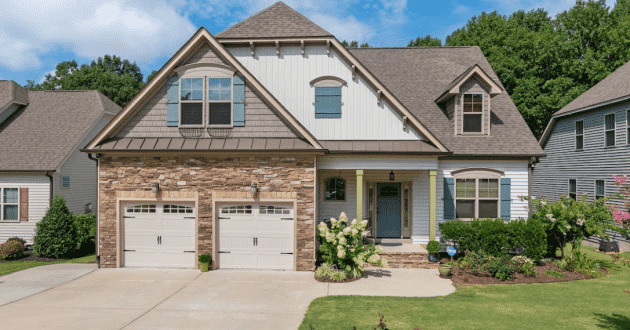Leaky Ceiling? Possible Causes For Your Water Damage
- - Category: Remodeling
- - 06 Feb, 2023
- - Views: 387
- Save

We all know that a leak in our home means something is amiss, but sometimes it's not intuitive to diagnose.
If you've ever had a leaky ceiling, you know the annoyance and potential for water damage that it can cause. But what causes a leaky ceiling in the first place? There are several possible culprits, which we'll explore in this blog post. Read on to learn more about what might be causing your water damage.
A common cause of a leaky ceiling is a faulty or damaged gutter system.
Gutter systems are vital for ensuring that water is safely directed away from your home, and when they start to wear down, you can often end up with a leak in your ceiling. This can be a serious issue since water damage can cause severe damage to the structure of your home and result in costly repairs. It's important to regularly inspect your gutter system so that any potential problems can be addressed before they lead to more significant issues like a leaky ceiling. Keeping your gutters clean and well-maintained is an essential step to avoiding damage to your home or business.
If you have an upstairs bathroom, the problem could be a leaky toilet or shower.
A leaky toilet or shower in an upstairs bathroom can be a real nuisance. The sound of dripping water is annoying and the damp feeling that accompanies it is definitely undesirable! If you find yourself dealing with such a problem, it pays to do some detective work and figure out which one is creating this mess. Depending on the root of the issue, different solutions come into play. You might need a new seal for the pipes around your toilet, or perhaps there's mold growing behind the tile of your shower stall. It's important to target the source of the problem first before looking at any potential fixes!
Another possible cause is condensation from your air conditioner.
Condensation is an often overlooked but important source of water leaks in the home. It can be caused by your air conditioner, resulting in both a higher temperature in the home and inefficient air conditioning output. It's important to take action to prevent condensate backup in your AC unit, such as making sure the condensate pump is checked regularly, or even upgrading your system with an electronically operated drain valve. Look out for signs of condensation accumulation around your air conditioners, such as water emerging from around its base or lid. Doing so can help you identify and address any issues quickly, helping to keep your unit running smoothly and maintaining a comfortable temperature in the home.
If you live in an area with high humidity, that could be the culprit as well.
If you are noticing an increase in common household pests, it could be due to living in an area with high humidity. The humid environment creates the perfect breeding ground for pests like cockroaches, rodents, and mosquitoes. Not only do these pests have the potential to leave behind their droppings wherever they roam but they can also spread a variety of diseases, making them a huge nuisance. Living in a high-humidity area can leave you feeling overwhelmed when trying to rid your home of these unwanted roommates. Knowing the cause can help you find solutions that will help mitigate their presence for good - so make sure to look into humidity levels if you're having a problem!
There are a few other less common causes for water damage to your ceiling, which include everything from holes in your roof to pipes that have burst inside your walls.
Home maintenance can sometimes be quite a chore, and water damage to the ceiling is no exception. Rarely the cause of a leaking overhead pipe, there are a few surprising things that can produce this type of damage - even holes in your roof from hail or wind damage! Water can also seep through wall cracks if pipes become damaged and burst within them due to temperature variations, making it tricky to identify these as the source of the issue. With countless possibilities to inspect before determining the cause of your ceiling's water damage, its wise to seek professional help instead of gambling on an incorrect diagnosis that could cost you time and money. Contacting a local roofing company, like Raber Roofing Systems, can be especially beneficial, as they will likely know the particular needs of your region and climate.
No matter what the cause, it's important to get the problem fixed as soon as possible to avoid further damage to your home.
It's essential to act fast when having an issue with your home. An ignored problem can quickly become a massive headache, resulting in costly repairs and potential safety hazards. Whether the issue is due to negligence or is simply normal wear-and-tear, you should address it promptly to avoid further damage and keep yourself and your family safe. It may be tempting to ignore a problem, but taking an extra minute to get it handled can save you from regretting that decision down the road.
There are a number of potential causes for a leaky ceiling, but the most common culprit is usually a faulty gutter system. If you have an upstairs bathroom, the problem could also be due to a leaky toilet or shower. Another possible cause is condensation from your air conditioner. If you live in an area with high humidity, that could be exacerbating the problem. There are a few other less common causes for water damage to your ceiling, which include everything from holes in your roof to pipes that have burst inside your walls. No matter what the cause, it's important to get the problem fixed as soon as possible to avoid further damage to your home.


